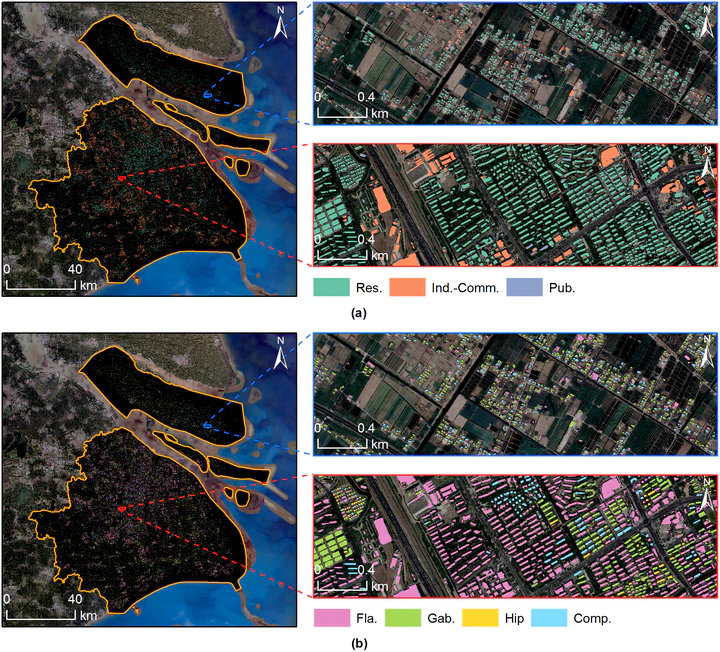Simultaneous extraction of spatial and attributional building information across large-scale urban landscapes from high-resolution satellite imagery
 Image credit: Workflow
Image credit: Workflow
Abstract
Understanding urban dynamics requires comprehensive building analysis, yet current methods focusing on specific aspects hinder the production of unified and large-scale inventories. This study introduces a multi-task deep learning network with a flexible architecture for simultaneously extracting spatial and attributional building information from high-resolution satellite images. This method efficiently segments rooftops and classifies buildings by urban function and architectural style of rooftops. Moreover, a strategic spatial sampling scheme from a data-centric perspective, informed by geographic and environmental diversity, optimizes the selection of representative samples to improve training efficiency and predictive accuracy. Comparative analyses demonstrate the framework’s superior performance, achieving an F1 score of 84.30% and an intersection over union of 72.86% in rooftop segmentation, and Kappa scores of 74.67% and 70.04% in classifying urban functions and architectural types, outperforming other advanced models by 2% to 25% across various metrics. Additionally, the adaptability of the network ensures that the framework meets diverse accuracy and efficiency requirements. By applying the proposed methodology to Shanghai, a unified city-scale dataset is generated. This dataset underscores the practical applicability and potential influence of the proposed methods in the fields of urban studies and sustainable development.